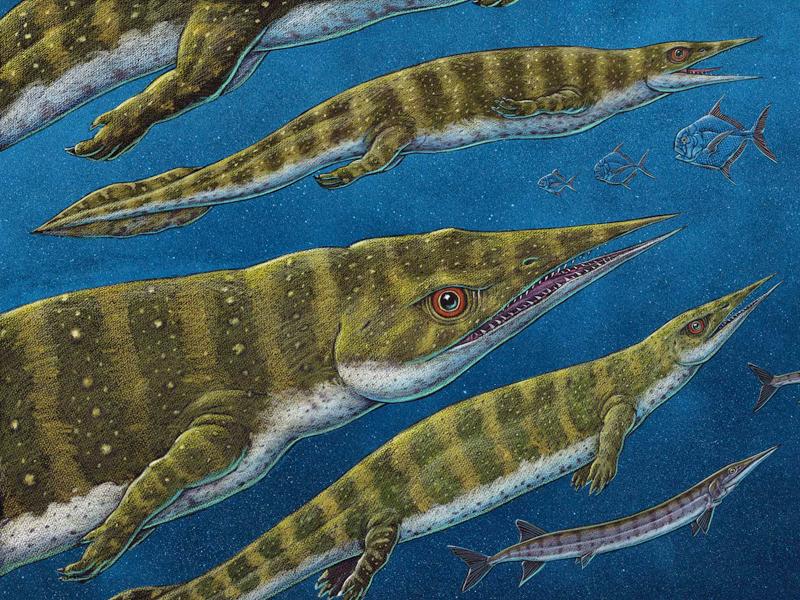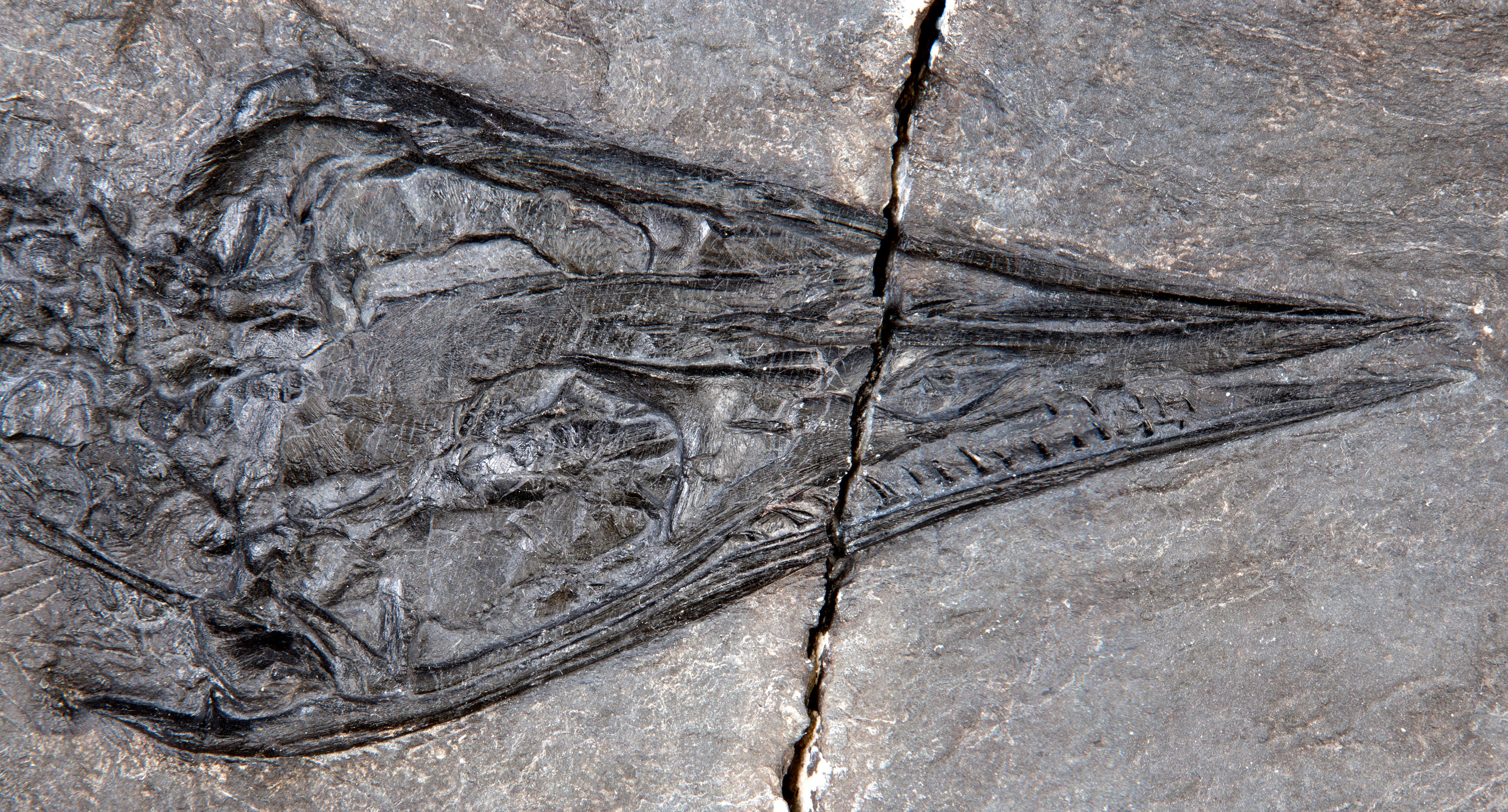

Pressed into the shale before the University of Alaska Fairbanks paleontologist were the fossilized remains of a brand-new species of thalattosaur, an extinct marine reptile that roamed the world’s shallow oceans during the Triassic period.
Like other thalattosaurs—the descendants of a lineage of reptiles that once lived on land before returning to the ocean—the three-foot-long Gunakadeit was a full-time denizen of the world’s coastal waters, Druckenmiller says. But its bizarrely shaped snout, which tapered into a thin-tipped point, clearly set this species apart from its kin. Though other thalattosaurs are known to boast thick, shell-crushing chompers or blade-like incisors for slicing through flesh, the Gunakadeit fossil harbored only a smattering of small, cone-shaped teeth on the back half of its lower jaw.
Gunakadeit’s feeding habits can’t be confirmed without a time machine. But Druckenmiller suspects it was probably poking its spindly schnoz into cracks and crevices, rooting for soft-bodied prey that it could snatch with its teeth and suck down like a vacuum. The lack of foreign bones in the creature’s guts seems to bolster the case for a squishy diet.
https://www.smithsonianmag.com/science-nature/215-million-year-old-sharp-nosed-marine-reptile-was-among-last-its-kind-180974276/